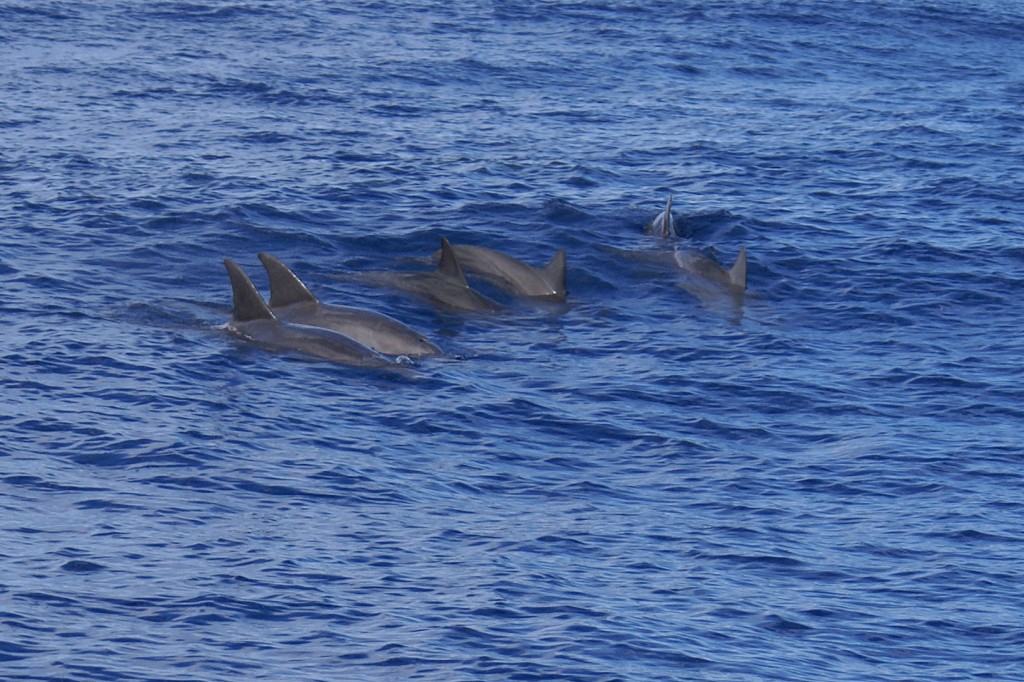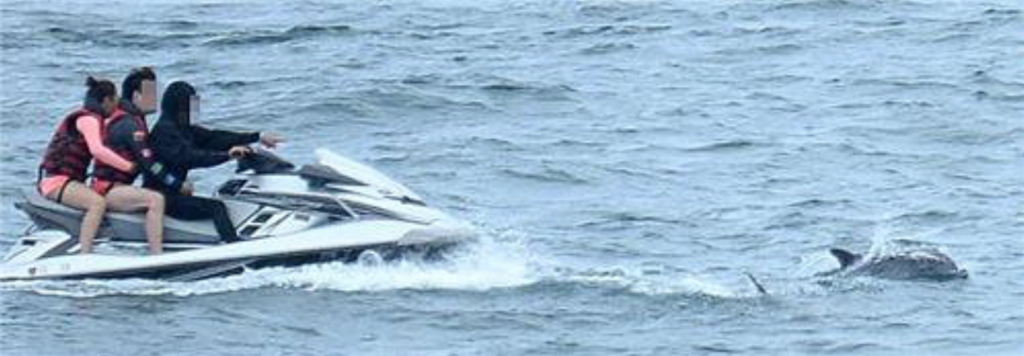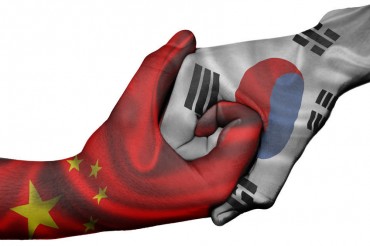
“With the popularity of marine leisure sports in Korea, the island has seen more visitors engaging in such activities,” said Kim. “And they often run into these dolphins, but they shouldn’t think of them as circus animals.” (image: Wikimedia)
JEJU, South Korea, Aug. 18 (Korea Bizwire) – The illegal poaching of wild dolphins in waters off the coast of Jeju Island may have diminished in the past year thanks to local fisheries and animal rights activists, yet Korea’s wild dolphins are still facing threats, this time, from imprudent watersport activities.
The coastal waters of Seongsan are among the popular breeding grounds for indo-pacific bottlenose dolphins, but the area has recently become a hotspot for jet boats.
“A jet boat bobs across the waters at full throttle, and drives straight through a pod of dolphins. The dolphins quickly dissipate, but the boat changes direction and starts chasing the mammals again,” recalls dolphin researcher Kim Mi-yeon.
Kim is a member of a research team from Jeju National University and Ewha Womans University that studies indo-pacific bottlenose dolphins around Jeju Island, and is also a frequent witness to similar sightings that take place in the island’s coastal waters.

“A jet boat bobs across the waters at full throttle, and drives straight through a pod of dolphins. The dolphins quickly dissipate, but the boat changes direction and starts chasing the mammals again.” (image: Yonhap)
“With the popularity of marine leisure sports in Korea, the island has seen more visitors engaging in such activities,” said Kim. “And they often run into these dolphins, but they shouldn’t think of them as circus animals.”
She warned that “approaching the animals too close can result in a collision, and the dolphins’ fins can be ripped off by the boats’ powerful propellers.”
“We’ve seen several dolphins that we believe suffered such tragic incidents.”
Indo-pacific bottlenose dolphins are typically 2.5-meters long and weigh over 200 kilograms, and although they’re believed to have a gentle character, their strength is not to be trifled with, calling for those partaking in water activities to take extra precautions.
Kim also noted that dolphins, as some of the most intelligent mammals, may not return to their usual habitat if they’re continuously disturbed by unwanted guests.
Many developed countries have regulations and guidelines that prohibit activities that disrupt wild dolphins and their habitat.
Countries like the United States and Australia, where dolphin tours are more commercialized, are limiting the number of approaches as they can generate psychological discomfort, which often leads to lower birthrates. Unless the dolphins swim towards the visitors, they must keep a distance of at least 50 meters, refrain from impeding their course, and only observe for about 30 minutes at a time. Feeding the mammals is also strictly forbidden.

She warned that “approaching the animals too close can result in a collision, and the dolphins’ fins can be ripped off by the boats’ powerful propellers.” (image: Yonhap)
Korea currently lacks such regulations. And while the 2012 animal preservation law included provisions that protect indo-pacific bottlenose dolphins, banning their distribution and poaching, no guidelines exist regarding their observation using vessels.
“Jeju is Korea’s only location with the perfect environment for some 110 indo-pacific bottlenose dolphins,” said Kim. “There’s a sense of urgency to regulate dolphin observation, even if it’s at the provincial level, to make sure these threatened animals don’t suffer any more hardships from humans.”
By Lina Jang (linajang@koreabizwire.com)






